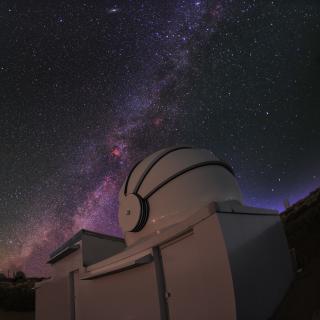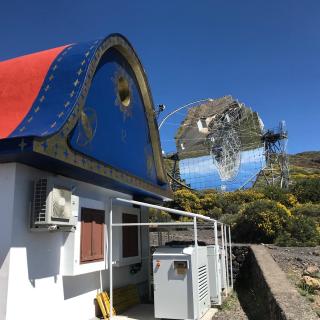Galaxies, in all their forms from spirals to ellipticals from giants to dwarfs have been widely studied over the past Century. To the surprise of the scientific community last year a new type of galaxy was discovered, residing in a galactic megalopolis known as the Coma Cluster, some 300 million light years away from Earth. Even though they are very numerous, these ultradiffuse galaxies have not been noticed until now because they are very fain. Their stars as spread over a very large area, which makes it particularly difficult to distinguish them from the sky background.
“These galaxies are particularly interesting, given that the violent environment in which they are situation would have destroyged them long ago were they not protected by a large amount of dark matter” says Michael Beasley, the first author or the article published in the journal Astrophysical Journal Letters. “To test this fascinating idea was possible after identifying an ultradiffuse galaxy near enough to study in detail.”
This galaxy, VCC 1287, is situated in the Virgo Cluster, some 50 million light years away, and it is surrounded by a swarm of globula clusters, which have proved the key to study its dark matter content. “ Globular clusters,made up of hundreds of thousands of stars, orbit within the gravitational field of the ultradiffuse galaxy,” adds Aaron Romanowsky of San José State University (USA) one of the authors of the article. “The heavier is a galaxy, the more rapidly its globular clusters move, so they can be used as a cosmic balance.”
Using the Gran Telescopio CANARIAS (GTC) the team found that these globular clusters move at high velocity, pulled by a surprisingly strong gravitational field. “Even though dark matter is present in other galaxies, this is an exceptional case” concludes Beasley. “For each kilogramme of ordinary material VCC 1287 contains 3 tonnes of dark matter.”
So we can say that ultradiffuse galaxies are essentially composed of dark matter, with very few stars”. This conclusion gives the scientists another question “How is it possible for galaxies so diffuse and dark to exist?”
Article: “An overmassive dark halo around an ultra-diffuse galaxy in the Virgo cluster”, by Michael Beasley (IAC-ULL), Aaron J. Romanowsky (San José State University-University of California Observatories), Vincenzo Pota (INAF, Osservatorio Astronomico di Capodimonte), Ignacio Martín Navarro (IAC-ULL-University of California Observatories), David Martínez Delgado (Universitat Heidelberg), Fabian Neyer ETH Zurich) y Aaron L. Deich (San José State University), 2016, ApJ Letters, 819, L20.
http://stacks.iop.org/2041-8205/819/L20
Contact:
Mike Beasley: beasley [at] iac.es



